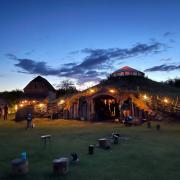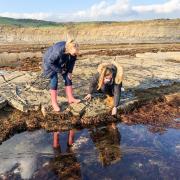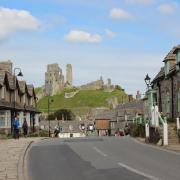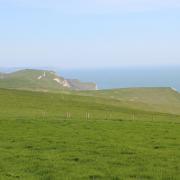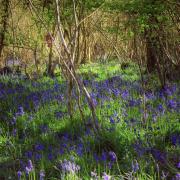Just 50 years ago, birds of prey were rare, a century ago they were even rarer. One of the main reasons for the steep decline in raptor populations was the relentless persecution they faced by us. Shot, trapped or poisoned, their presence at certain locations was not welcome. As each year passed, their numbers dwindled to worryingly low levels. There were other pressures too, including egg collecting, DDT poisoning (an agricultural insecticide only banned in 1986) and to a certain extent habitat loss. Thankfully, as legal protections became stronger, and the enforcing of the law stricter, birds of prey numbers gradually began to recover.
Last summer, our Birds of Poole Harbour charity carried out a full Breeding Raptors of Poole Harbour survey, focusing on the 11 species that can be found here. This ranged from the agile hobby to the majestic white-tailed eagle whose wingspan is between 1.8 – 2.4 m. The results of this survey were not only encouraging, but revealed how the landscape had changed for the better when it comes to birds of prey and their recovery in Dorset. Before we highlight the results, it’s important to note that, to date, there is no evidence that links the increase in some bird of prey populations and the national decline of some songbird populations. Yes, some birds of prey eat small birds, but that is a sign of a healthy, functioning eco-system.
The most numerous breeding raptor across the Poole Harbour basin is the common buzzard, with a staggering 47 territories observed. Even as recently as the 1970’s the common buzzard was a rare sight in Dorset. However, on warm May days they can now be seen soaring high above any habitat type, wings held stiff expertly riding the thermal air currents and often circling with several other buzzards.

The next most numerous breeding raptor was the sparrowhawk with 15 territories logged, split between the rural south of the harbour and the urban north. Up next was the kestrel, a species that’s struggling nationally. Our survey returned 11 territories, down from 15 nests which were counted during a similar survey some 25 years ago. More worrying is that no kestrels bred in the northern areas of Poole Harbour, including known traditional sites. The reasons for this are unclear so this will need further investigation.
On a more positive note, there were two new or returning breeding raptor species last year. The returner was our osprey pair which successfully raised two chicks during the summer, the first to be raised in Southern Britain for nearly 200 years. The newcomer was the goshawk, with one pair known to have fledged young. Goshawks are apex predators, mainly hunting wood pigeon and grey squirrels. Their status across Dorset is increasing and over the coming years goshawk, which used to be rarer than hen’s teeth, could soon become a regular, daily sighting.

Peregrine, another finely tuned hunter, saw three successful nests across the harbour including the much-loved ‘Barclays’ pair. This pair nested on the top balcony of the now vacated Barclays building in the centre of Poole, providing an unexpected wild urban spectacle for those going about their business on the pavement below who, alerted by the kestrels’ calls, looked upwards.
Marsh harriers are the big softies in the raptor world. Although efficient hunters, their lazy approach to catching prey means they are not as feared by other birds. Marsh harriers were almost completely eradicated from the UK back in the 1930’s and 1940s but have made an incredible comeback right across the country with around 600 pairs, including two pairs in Poole Harbour.
The nimble and sickle-winged hobby, a close relative of the kestrel and peregrine have not had a great 2022 with only three territories noted. In recent years there have been as many as five or six pairs around the harbour, so this is a notable decrease. When they first arrive back from Africa in April, they’re reliant on protein rich flying insects such as dragonflies to fuel-up which were in short supply last spring. So, could that have been a factor?
And from the smallest to the biggest – the white-tailed eagle. To be honest, we weren’t expecting any breeding last summer as the eagles, which have recently been reintroduced to the Isle of Wight, are too young to breed. However, we saw plenty of encouraging signs during the survey that indicated that white-tailed eagles are keen to set up home in and around Poole Harbour.
All being well, white-tailed eagles will soon be a breeding Poole Harbour raptor, alongside our resident ospreys. When they are, we can reflect on just how far we have come as a society and a conservation movement to have so many raptors flourishing in this small area of Dorset.
Find out more at birdsofpooleharbour.co.uk






